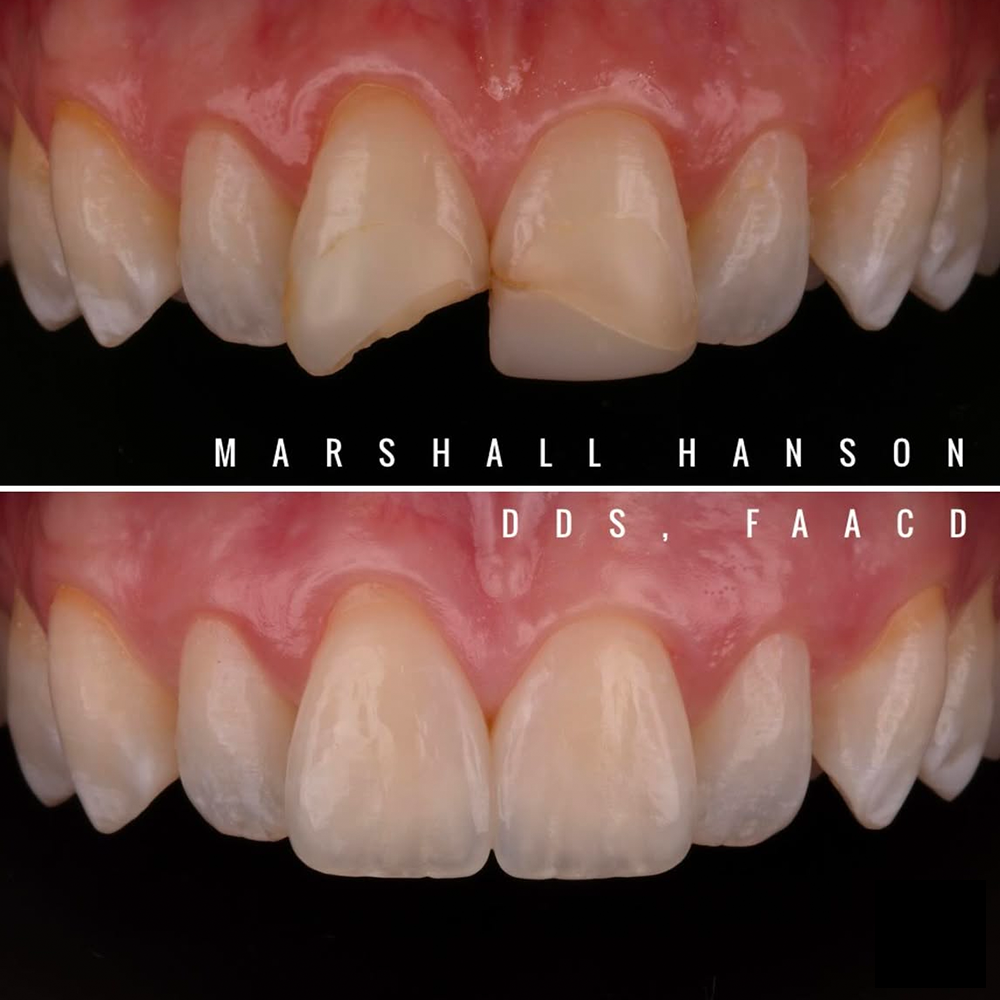Cracks in Anterior Teeth
Cracks in anterior teeth often come from trauma or high occlusal forces. In addition to being an aesthetic concern, how these teeth are treated can mean the difference between conserving remaining tooth structure or extraction. The goal of biomimetic restorative dentistry is to conserve as much critical tooth structure as possible, even in severely cracked teeth, to prolong the tooth’s natural function as long as possible and delay more invasive treatment, like implants, until it is absolutely necessary.
Case featuring a cracked anterior tooth by Dr. Marshall Hanson, DDS, FAACD. Dr. Hanson is a Biomimetic Mastership alum and teaches advanced anterior restorations with his Marshall Hanson Method.
Treating horizontal fractures in anterior teeth
The advanced adhesive and stress-reduction techniques of biomimetic restorative dentistry help support structurally compromised teeth more than traditional retention-form or poorly bonded composite restorations. Because anterior teeth experience lower occlusal forces than posterior teeth, even anterior teeth that are severely damaged or non-vital teeth can be preserved with biomimetic bonding in many cases. Following Dr. David Alleman’s Six Lessons Approach to Biomimetic Restorative Dentistry, anterior teeth with horizontal fractures can be restored to resolve symptoms and function like a natural tooth.
This case by Dr. Marshall Hanson, DDS, FAACD shows how advanced adhesion can repair cracked anterior teeth while conserving healthy tooth structure.
Emphasis on posterior teeth
While the Six Lessons Approach is applicable to anterior teeth, the focus is on posterior teeth because those are the most common restorative cases. Subjected to higher occlusal forces and more often affected by caries or cracks, posterior teeth are the day to day cases for most dentists. The increased stresses that make posterior teeth require treatment more often also make them a greater challenge to restore because the varying substrates in the bonding field can lead to weaker bond strengths and the increased forces degrade the weak bonds further.
This case by Dr. Davey Alleman, DMD shows the increased occlusal forces on posterior teeth can cause crack to form.
By using the Six Lessons Approach as taught in Alleman Center training programs, doctors can predictably treat deep caries and cracks to resolve symptoms, bond to each substrate in a complex restoration and achieve outcomes that stay symptom-free and bonded for years, if not decades.
Biomimetic principles for advanced aesthetics or occlusion
Called the biobase, the final step before enamel replacement in a biomimetic restoration, this serves as the foundation for a long-lasting, symptom-free restoration. This means more advanced aesthetic or occlusal cases last longer and avoid re-treatment.
For doctors whose goal is advanced aesthetics or advanced occlusion, starting with a predictable bonding protocol is the logical first step in your training. Why throw away your hard work on a complex case that may go non-vital, have continued symptoms or simply fail in the next few years? The Six Lesson Approach gives you confidence in the foundation of your restoration, so whatever your — and your patients’ — goals are for the top of the tooth, you know the tooth’s foundation protects its vitality and function long-term.
To learn more about predictable bonding, even in complex cases like cracked anterior teeth, view upcoming Alleman Center dentistry training programs.







